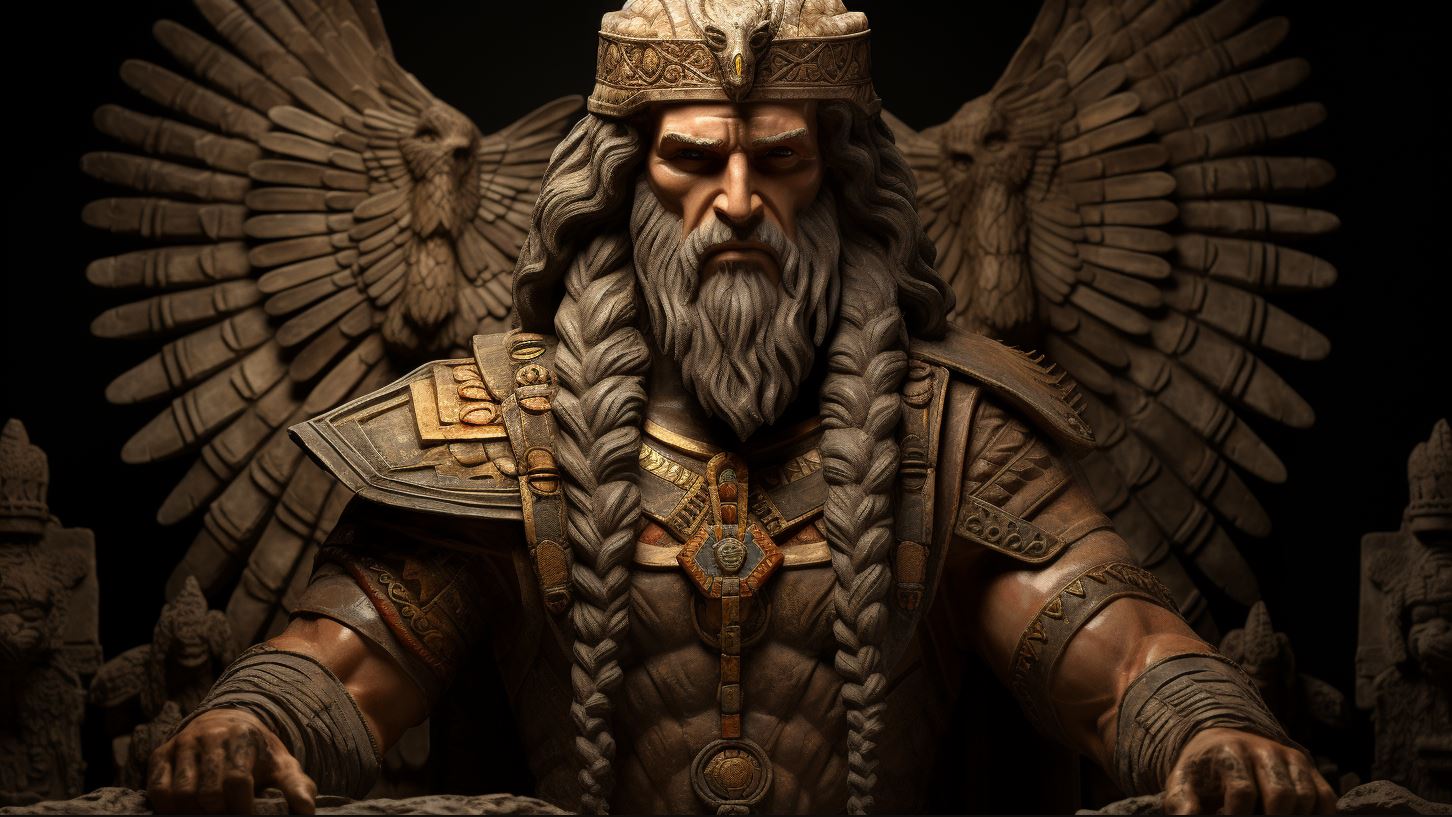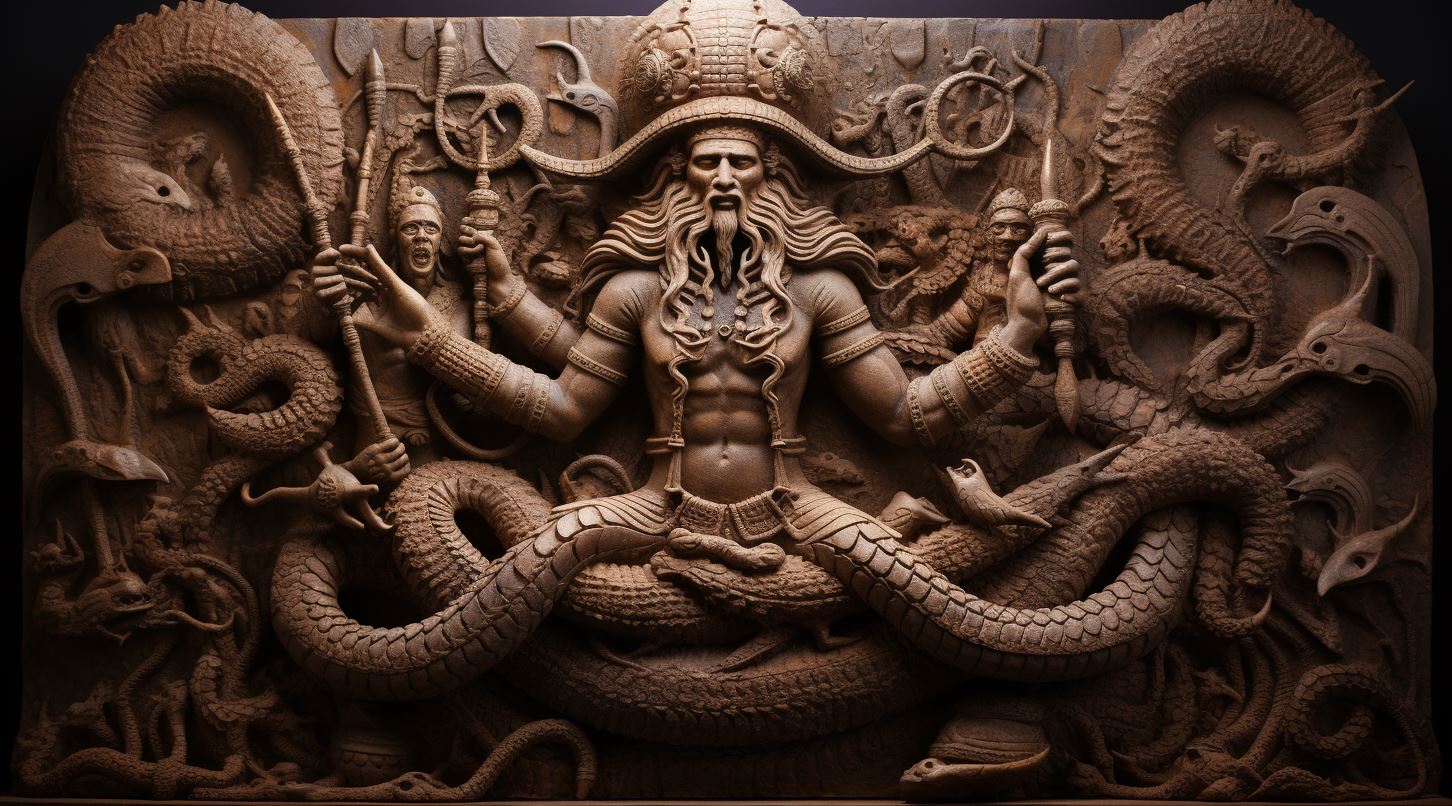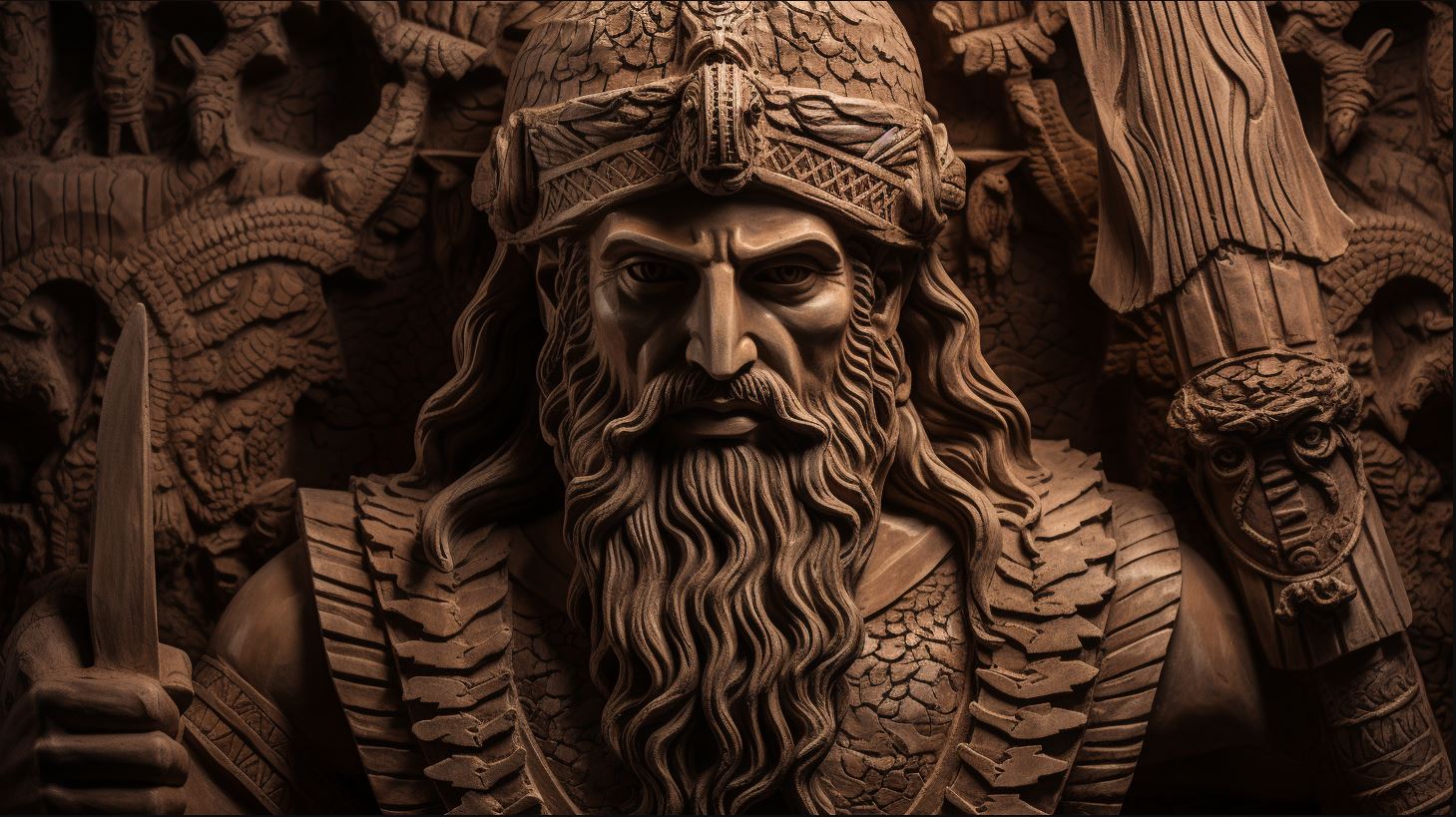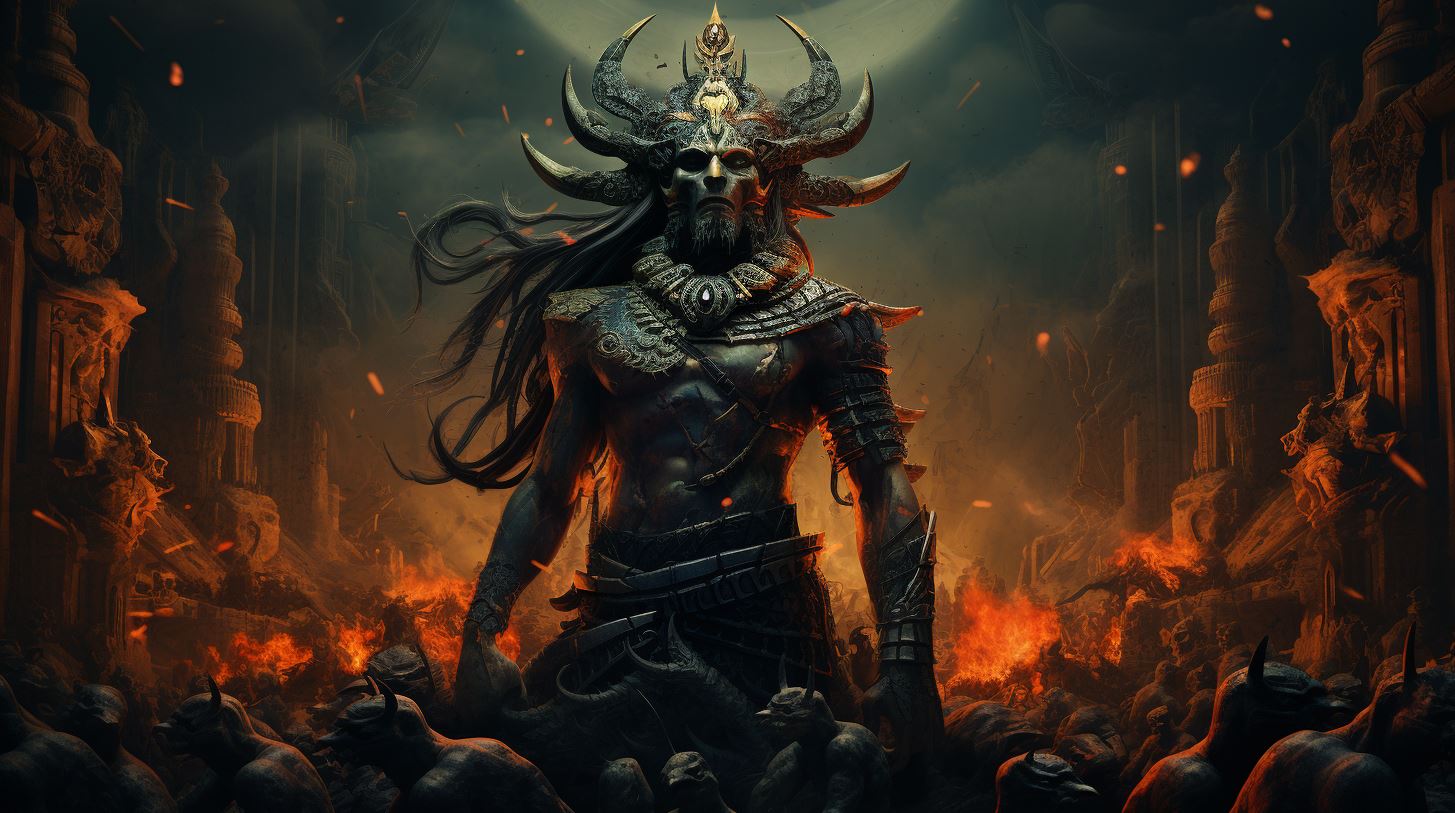Ninimma Goddess: Insights into the Sumerian Fertility Deity

Ninimma goddess, a prominent figure in Sumerian mythology, holds significant roles in creation, fertility, and healing. Worshiped in various temples across ancient Mesopotamia, Ninimma’s influence extends beyond the boundaries of Sumerian society.
This article sheds light on Ninimma’s association with other deities such as Enlil and Ninlil, explores her impact on daily life and agriculture, and addresses common questions surrounding her divine nature and worship practices.
Additionally, the article delves into Ninimma’s enduring legacy and her influence on later cultures, as well as modern interpretations and references in contemporary society.
Ninimma Goddess in Sumerian Mythology
Ninimma, a prominent figure in Sumerian mythology, holds a significant role in various aspects of ancient Mesopotamian beliefs. Let’s delve into the different dimensions of Ninimma’s existence and her association with creation, fertility, vegetation, as well as healing and birth.
The Role of Ninimma in Creation Myth
In the rich tapestry of Sumerian mythology, Ninimma emerges as a crucial entity in the narrative of creation. According to ancient tales, she played a fundamental role in shaping the world and bringing order to the chaos.
Her presence in the creation myth showcases her divine power as she weaves the fabric of existence, setting the stage for life to flourish.
Ninimma’s Association with Fertility and Vegetation
Ninimma epitomizes the essence of fertility and vegetation in Sumerian belief systems. As a goddess closely tied to the cycles of nature, she embodies the bountiful aspects of the earth, nurturing the growth of crops and sustaining life.
Her association with fertility highlights her role in facilitating abundant harvests, ensuring the continuation of civilizations through prosperous agriculture.
Ninimma’s Power in Healing and Birth
One of the significant facets of Ninimma’s divine influence lies in her association with healing and birth. Considered a goddess of life and vitality, she possesses the ability to restore health and promote successful childbirth.
The ancient Mesopotamians turned to Ninimma for healing remedies and sought her blessings for safe deliveries, recognizing her as a guardian of well-being and the bringer of new life.
As we explore the depths of Sumerian mythology, Ninimma’s multifaceted nature becomes increasingly evident.
From her role in the creation myth to her embodiment of fertility and vegetation, as well as her power in healing and birth, Ninimma stands as an influential and revered goddess in the ancient pantheon.
Worship of Ninimma
Worship of Ninimma in ancient Mesopotamia revolved around various practices and rituals that showcased devotion and reverence towards the goddess. With a focus on fertility, vegetation, and healing, worshippers engaged in ceremonies and observances to seek her blessings.
Worship Practices and Rituals
- Anointing Ceremonies: Devotees would anoint themselves with oils and perfumes as a symbolic act of purification and connection with Ninimma’s divine energy.
- Offerings and Sacrifices: People brought offerings of food, flowers, and other precious items to the temples, symbolizing gratitude and seeking blessings for fertility, good harvests, and healing.
- Prayers and Incantations: Prayers were recited to invoke Ninimma’s presence, seek her favor, and express worshipper’s desires and concerns.
Incantations were also used to heal ailments and promote fertility.
- Processions and Festivals: Elaborate processions and festivals were held in honor of Ninimma, where worshippers would gather at the temples, carrying statues of the goddess and offering prayers, songs, and dances.
These events fostered community cohesion and spiritual connection.
Temples Dedicated to Ninimma
Ninimma was worshipped in various temples across Mesopotamia, each serving as a sacred space dedicated to the goddess. These temples were magnificent architectural marvels, adorned with intricate artwork and sculptures depicting Ninimma’s divine presence.
The temples offered a place for devotion, pilgrimage, and spiritual connection. Worshippers would visit these temples to seek Ninimma’s blessings, present their offerings, and participate in religious ceremonies.
Some notable temples dedicated to Ninimma include:
- The Temple of Ekur in Nippur: This grand temple was a center of worship for multiple deities, with Ninimma being one of the prominent figures revered there.
- The Temple of Ninimma in Girsu: Located in the city of Girsu, this temple was specifically dedicated to the worship of Ninimma, emphasizing her role as a goddess of fertility and vegetation.
- Temples in Other Cities: Ninimma’s popularity led to the establishment of temples in various cities within Mesopotamia, such as Eshnunna, Babylon, and Ur.
These temples served as focal points for religious practices, where worshippers engaged with the divine presence of Ninimma and sought her blessings for prosperity, fertility, and healing.
Ninimma and Other Sumerian Deities
Ninimma, a prominent figure in Sumerian mythology, had significant connections with other deities, particularly Enlil and Ninlil. Let us explore the intricate relationships and interactions of Ninimma with these divine beings.
Connections with Enlil and Ninlil
Ninimma shared a close association with Enlil, the chief deity in Sumerian pantheon, renowned for his dominion over the wind, air, earth, and storms. As Enlil’s divine consort, Ninimma played a crucial role in supporting and complementing his powers.
Together, they represented the cosmic forces responsible for the order and balance in the universe.
Furthermore, Ninimma’s connection with Enlil extended beyond their divine partnership. The union between Ninimma and Enlil resulted in the birth of other significant deities, including Nanna, the Moon God, and Inanna, the Goddess of Love and War.
This further exemplifies Ninimma’s integral role in the Sumerian pantheon and her influence on the divine family tree.
In addition to Enlil, Ninimma had an intriguing association with Ninlil, another prominent goddess in Sumerian mythology.
The divine union between Enlil and Ninlil resulted in the birth of various deities, including Ninurta, the God of War and Agriculture. As the mother of these deities, Ninimma’s contributions to the divine family lineage were significant and revered.
Ninimma’s Interactions with Other Gods and Goddesses
Beyond her connections with Enlil and Ninlil, Ninimma’s interactions extended to various gods and goddesses in the Sumerian pantheon. She played a crucial role in the divine council, providing wisdom and counsel to her fellow deities in matters related to creation, fertility, and healing.
Ninimma’s interactions with Utu, the Sun God, were particularly noteworthy. The partnership between Ninimma and Utu represented the fertile union between light and life, as Ninimma’s association with fertility and vegetation complemented Utu’s role in providing warmth and nourishment to the world.
Together, they formed a vital symbiosis that supported the sustenance and growth of all living beings.
Furthermore, Ninimma’s connection with Enki, the God of Wisdom and Water, showcased her power in healing and birth.
As a deity associated with childbirth and maternal care, Ninimma often collaborated with Enki to ensure the well-being and successful delivery of mortal and divine offspring. Their cooperative efforts were essential in maintaining the cycle of life.
- Ninimma’s association with Enlil, the chief deity
- Ninimma’s role in the divine family tree
- Ninimma’s connection with Ninlil and their offspring
- Interactions between Ninimma and Utu, the Sun God
- Ninimma’s collaboration with Enki in matters of healing and birth
Ninimma’s interactions with these deities further solidified her importance in the Sumerian pantheon and her influence on various aspects of ancient Mesopotamian life.
Influence of Ninimma in Ancient Sumerian Society
Ninimma’s Role in Daily Life
Ninimma’s influence permeated every aspect of ancient Sumerian society, playing a significant role in the daily lives of its people. As a goddess associated with fertility and birth, she was revered as a protector and nurturer of life.
Sumerians believed that invoking Ninimma’s blessings and guidance ensured the well-being of their families and communities.
Women, in particular, held a deep reverence for Ninimma, as she was seen as a guardian of femininity and a provider of fertility.
They sought her aid in matters related to childbirth, seeking her blessings for a safe and successful delivery. This belief in Ninimma’s power extended beyond the realm of childbirth, as women regarded her as a source of wisdom and strength in navigating the challenges of everyday life.
Ninimma’s Impact on Agriculture and Harvest
The agricultural prosperity of ancient Sumer was closely tied to Ninimma’s influence. As a goddess associated with vegetation and fertility, she was believed to govern the growth of crops and ensure bountiful harvests.
Sumerian farmers engaged in rituals and offerings to appease Ninimma, seeking her favor for favorable weather conditions, abundant rainfall, and fertile soil.
Ninimma’s role in agriculture extended beyond maintaining the fertility of the land.
She was also considered a healing goddess, capable of restoring diseased or damaged crops. Farmers offered prayers and sacrifices to Ninimma to seek her aid in curing blights and diseases that affected their fields.
The reverence for Ninimma’s role in agriculture extended to the larger society as well, as her blessings were seen as crucial for the prosperity and sustenance of the entire community. Ancient Sumerians recognized the vital link between Ninimma’s favor and their agricultural practices, continuously seeking her guidance to maintain the delicate balance between humanity’s dependence on nature and their own efforts in cultivating the land.
Ninimma’s profound influence on daily life and agriculture in ancient Sumer showcases the deeply ingrained connection between spirituality and practicality in their society. From personal well-being to communal sustenance, her presence was felt in every aspect of existence, reflecting the profound reverence and reliance the Sumerians placed on their deities.
Unraveling Ninimma’s Mysteries: Common Questions Answered
Was Ninimma a Mother Goddess?
Ninimma, though primarily known for her fertility and creative aspects, is not explicitly referred to as a “Mother Goddess” in Sumerian mythology. However, she is closely associated with the nurturing aspects of motherhood, as she presides over childbirth and the growth of life.
Through her association with fertility and vegetation, Ninimma embodies the essence of motherhood in the natural world.
Did Ninimma Have a Role in Human Creation?
While Ninimma’s role in human creation is not directly mentioned in Sumerian texts, she is often associated with the creation of the first human beings. According to certain myths, Ninimma molds clay figures, imbuing them with life and breath, thus contributing to the emergence of humanity.
Her association with fertility and life-giving forces further reinforces her potential involvement in the creation of humans.
How Did Ninimma Cult Worship Evolve over Time?
The worship of Ninimma evolved throughout the ages in Mesopotamia. Initially, she was venerated primarily as a fertility deity, with rituals and offerings dedicated to her for bountiful harvests and healthy offspring.
Over time, as the Sumerian pantheon developed and religious practices evolved, Ninimma’s cult worship expanded to include healing, protection, and the overall well-being of the community. Temples dedicated to Ninimma became important centers of religious and social life, where devotees sought her blessings and guidance.
As centuries passed, the influence of Ninimma’s cult spread to other regions and cultures, and her worship persisted even beyond the decline of the Sumerian civilization. In later periods, her divine attributes and symbolism resonated with different societies, resulting in adaptations and syncretism with other goddesses across ancient Mesopotamia and beyond.
Today, the legacy of Ninimma continues to thrive, with modern interpretations embracing her symbolism of fertility, creation, and healing. Her influential presence can be found in various artistic representations, literature, and spiritual practices, connecting contemporary society to the ancient world and honoring the enduring power of this remarkable Sumerian goddess.
Exploring the Legacy of Ninimma
As we delve into the fascinating world of Ninimma, it’s important to understand her lasting impact on later cultures and the various interpretations and references of her in modern times. Let’s explore the intriguing legacy of this Sumerian goddess.
Ninimma’s Influence on Later Cultures
Ninimma’s influence extended far beyond the ancient Sumerian civilization. As neighboring cultures came into contact with Sumerian beliefs and practices, they adopted and incorporated aspects of Ninimma into their own religious systems.
One notable example is the Akkadian culture, which emerged after the fall of the Sumerian empire. The Akkadians revered Ninimma as Ishtar, the goddess of love, beauty, and fertility.
The Babylonians, who followed the Akkadian civilization, further integrated Ninimma into their pantheon.
She became known as Ishtar in Babylonian mythology, embodying both love and war, and was widely worshiped throughout Mesopotamia. The Babylonians associated her with the planet Venus and believed she controlled its movements, influencing aspects of love, fertility, and prosperity.
Another civilization influenced by Ninimma’s legacy was the Assyrians. They revered a goddess named Nisaba, who shared several similarities with Ninimma. Nisaba governed over grains, writing, and wisdom, embodying the importance of agriculture and intellectual pursuits.
This connection hints at the enduring impact of Ninimma’s association with fertility and knowledge throughout the region.
Modern Interpretations and References of Ninimma
Ninimma’s significance continues to captivate scholars, artists, and enthusiasts in our modern era. While the ancient temples may lay in ruins, her presence remains alive through various means.
Artistic Expressions:
Numerous contemporary artists draw inspiration from Ninimma’s symbolism, incorporating her imagery into their works. Paintings, sculptures, and digital art often depict the goddess in her role as a fertility deity, emphasizing the significance of nature, growth, and abundance.
Literature and Research:
Academic research and literary works continue to shed light on Ninimma’s myths and influence. Scholars meticulously study ancient texts, deciphering the intricate details of her worship, role in creation, and interactions with other deities.
These findings contribute to our understanding of Sumerian culture and its divine pantheon.
Revival of Ancient Practices:
Some individuals and groups have embarked on a journey to revive ancient Sumerian practices and beliefs. Drawing inspiration from historical records and archaeological findings, they strive to keep the memory of Ninimma and other deities alive by reconstructing the rituals and ceremonies associated with her worship.
These efforts aim to honor a rich cultural heritage and preserve the spiritual traditions of the past.
Poetic and Musical Tributes:
Ninimma’s name evokes poetic musings and musical compositions that pay homage to her divine essence. Poets compose verses praising her nurturing qualities, while musicians create melodies that capture the essence of fertility and rejuvenation associated with her worship.
- Artistic expressions: Contemporary artworks depicting Ninimma’s symbolism
- Literature and research: Academic studies unraveling Ninimma’s myths and influence
- Revival of ancient practices: Reconstructing rituals to honor Ninimma and Sumerian traditions
- Poetic and musical tributes: Verses and melodies inspired by Ninimma’s divine essence
Through these various channels, Ninimma’s legacy lives on, its significance resonating across different cultures and artistic forms.
As we continue to explore and interpret the impact of this ancient deity, we gain a deeper understanding of the rich tapestry of human belief and the enduring power of divine figures such as Ninimma.
.




















